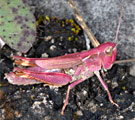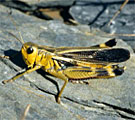Phaneroptera falcata (Poda, 1761)
![Phaneroptera falcata: Adult (eastern Swabian Alb, Germany, August 2012) [N] Phaneroptera falcata: Adult (eastern Swabian Alb, Germany, August 2012) [N]](thumbs/tettigoniidae/falcata_2012.jpg)
![Phaneroptera falcata: Adult (eastern Swabian Alb, Germany, August 2012) [N] Phaneroptera falcata: Adult (eastern Swabian Alb, Germany, August 2012) [N]](thumbs/tettigoniidae/falcata_n2012.jpg)
![Phaneroptera falcata: Female (eastern Swabian Alb) [N] Phaneroptera falcata: Female (eastern Swabian Alb) [N]](thumbs/tettigoniidae/falcata_m.jpg)
![Phaneroptera falcata: Female (eastern Swabian Alb) [N] Phaneroptera falcata: Female (eastern Swabian Alb) [N]](thumbs/tettigoniidae/falcata_w.jpg)
![Phaneroptera falcata: Female (eastern Swabian Alb near Söhnstetten, August 2013) [N] Phaneroptera falcata: Female (eastern Swabian Alb near Söhnstetten, August 2013) [N]](thumbs/tettigoniidae/falcata_im2013.jpg)
![Phaneroptera falcata: Female (eastern Swabian Alb) [N] Phaneroptera falcata: Female (eastern Swabian Alb) [N]](thumbs/tettigoniidae/falcata_w08.jpg)
![Phaneroptera falcata: Larve [N] Phaneroptera falcata: Larve [N]](thumbs/tettigoniidae/falcata_larve.jpg)
![Phaneroptera falcata: Habitat: steppe-like grassland on the eastern Swabian Alb [N] Phaneroptera falcata: Habitat: steppe-like grassland on the eastern Swabian Alb [N]](thumbs/tettigoniidae/falcata_h.jpg)
![Phaneroptera falcata: Habitat: warm clearing with Satyrium ilicis on the eastern Swabian Alb [N] Phaneroptera falcata: Habitat: warm clearing with Satyrium ilicis on the eastern Swabian Alb [N]](thumbs/tettigoniidae/falcata_h2.jpg)
![Phaneroptera falcata: Habitat (eastern Swabian Alb near Söhnstetten, August 2013) [N] Phaneroptera falcata: Habitat (eastern Swabian Alb near Söhnstetten, August 2013) [N]](thumbs/tettigoniidae/falcata_h2013.jpg)
Nutrition:
Leaf and flower food, also small insects such as aphids, etc.
Habitat:
Phaneroptera falcata prefers dry, warm areas such as higher and denser growing grasslands, dry forb communities, forest edges, extensive or abandoned vineyards, dry ruderal terrain and dry to slightly moist clearcuts.
Life cycle:
The eggs are stored in leaves (between the cuticles) and overwinter there. This is the explication for the mowing intolernace of Phaneroptera falcata. Imagines can be observed from July to October. Phaneroptera falcata is getting adult rather late.
Endangerment factors:
Even if dry, warm habitats are decreasing, Phaneroptera falcata is able to spread due to climate change and is currently at no or little risk. In recent years it has reached, for example the plateau of the eastern Swabian Alb, coming from the northern foreland.
Remarks:
The distribution extends from the Pyrenees across Central and Southern Europe (in Greece missing largely) to the Black Sea.
Phaneroptera nana


